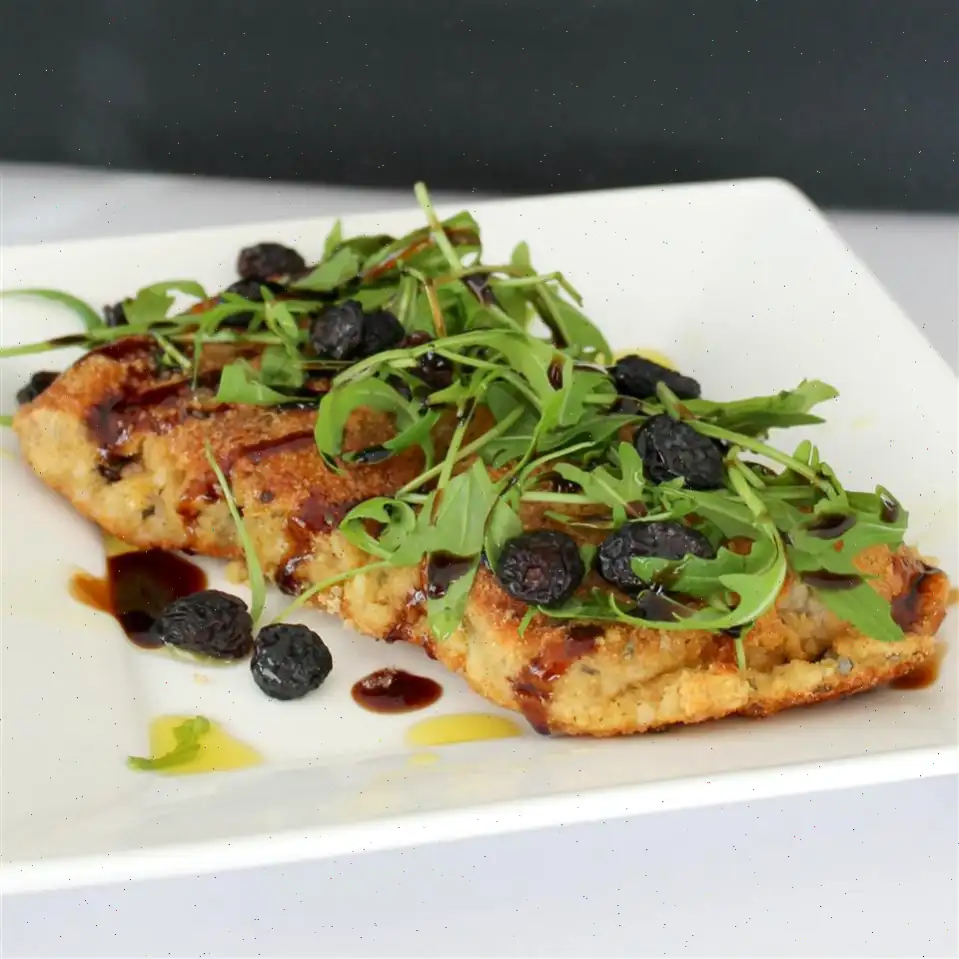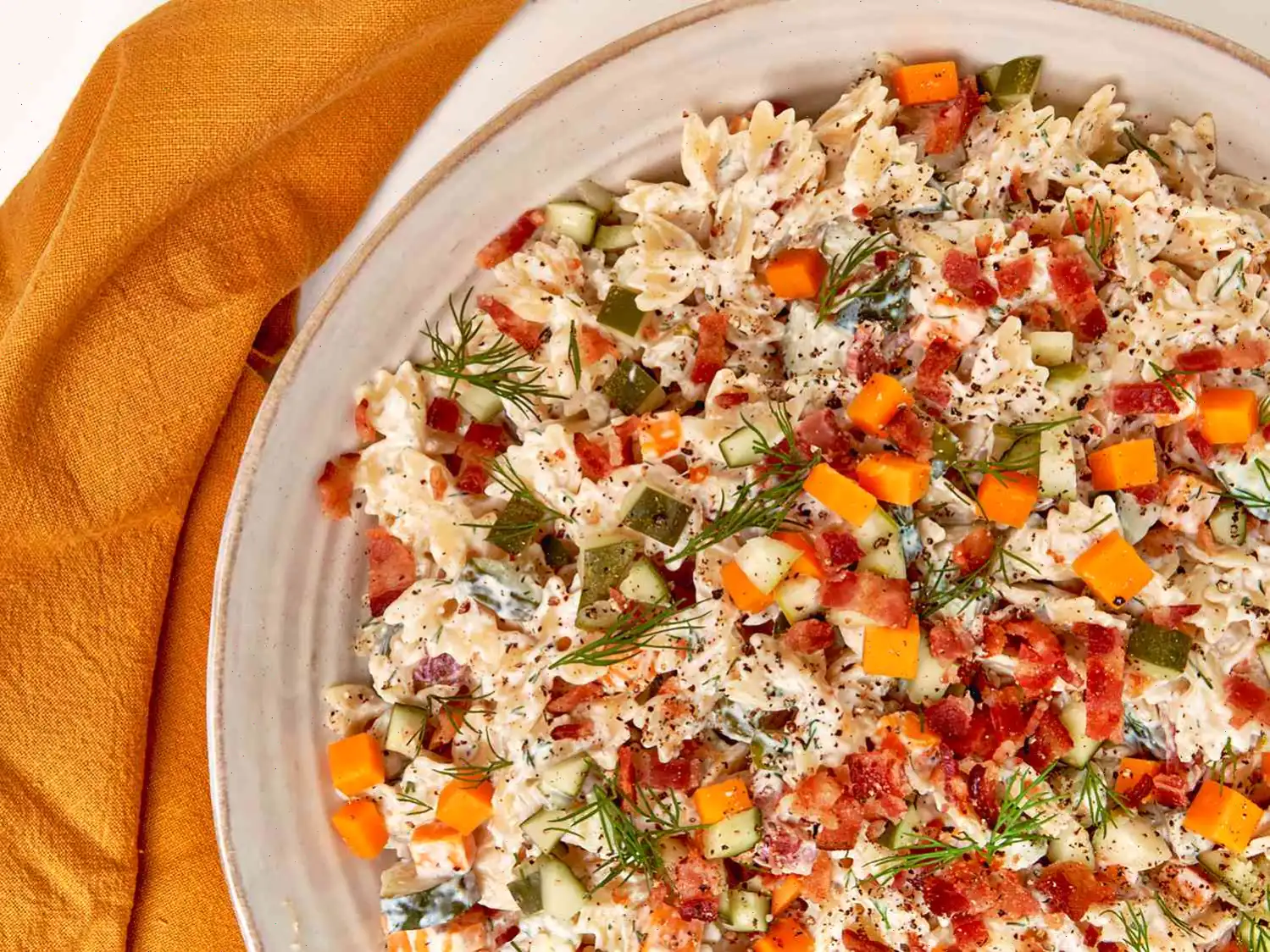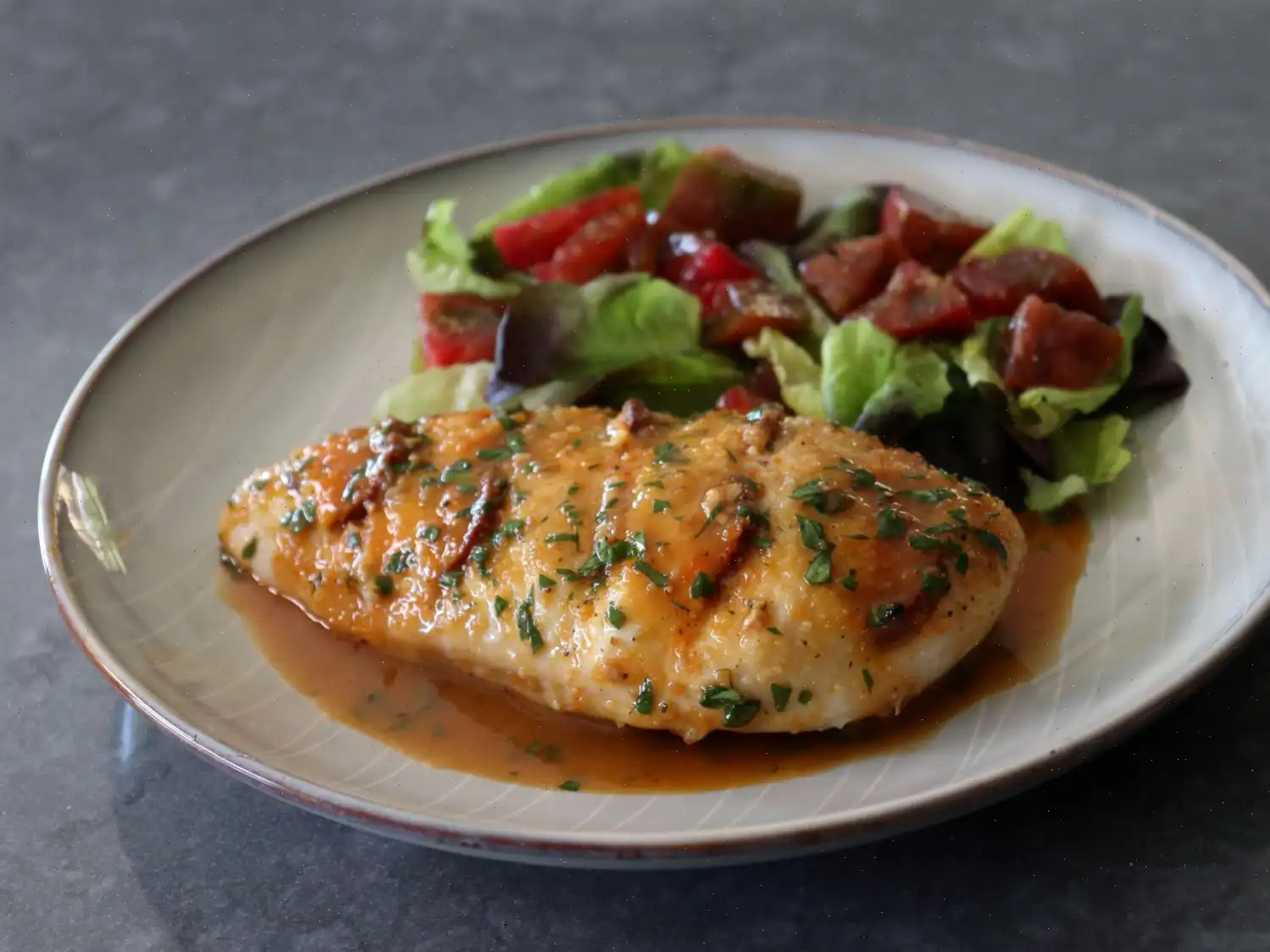
Baked Veal Milanese Recipe
Ingredients
- 1 egg
- 1 tablespoon lemon juice
- 1 tablespoon milk
- cup all-purpose flour
- cup Italian seasoned bread crumbs
- cup grated pecorino Romano cheese
- teaspoon adobo seasoning, or to taste
- 1 teaspoon olive oil
- 4 (4 ounce) thinly-sliced veal cutlets
- 1 cups arugula, divided
- 4 tablespoons golden raisins, divided
- 4 teaspoons balsamic vinegar, divided
- 4 teaspoons olive oil, divided
Directions
- Preheat oven to 350F (175C).
- In a small bowl, whisk together the egg, lemon juice, and milk.
- Place the flour in a separate shallow bowl.
- In a third bowl, combine the Italian seasoned bread crumbs, grated pecorino Romano cheese, and adobo seasoning.
- Heat 1 teaspoon of olive oil in a skillet over medium heat.
- Dredge each veal cutlet in the flour, then dip into the egg mixture, and press into the bread crumb mixture to coat both sides.
- Pan-fry the breaded veal cutlets in the hot oil until the crumbs are lightly browned and the coating is set, about 1 minute per side.
- Transfer the veal cutlets to a baking dish.
- Bake the cutlets in the preheated oven until the juices run clear, about 20 to 25 minutes.
- Transfer the veal to 4 serving plates. Top each cutlet with of the arugula and sprinkle the raisins over the arugula.
- Drizzle 1 teaspoon of balsamic vinegar and 1 teaspoon of olive oil over each serving.
Nutrition Facts (per serving)
- Calories: 365
- Total Fat: 16g (20% DV)
- Saturated Fat: 5g (26% DV)
- Cholesterol: 121mg (40% DV)
- Sodium: 468mg (20% DV)
- Total Carbohydrate: 33g (12% DV)
- Dietary Fiber: 2g (6% DV)
- Total Sugars: 8g
- Protein: 23g (47% DV)
- Vitamin C: 3mg (4% DV)
- Calcium: 226mg (17% DV)
- Iron: 3mg (15% DV)
- Potassium: 323mg (7% DV)
History of the Baked Veal Milanese
The dish known as Veal Milanese (Cotoletta alla Milanese) has a long and rich history, originating from the Lombardy region of Italy, specifically from Milan. While many versions exist, the most traditional one consists of veal cutlets that are breaded and fried to perfection. The origins of the dish can be traced back to the 12th century, where it was thought to have been influenced by the Austrian dish Wiener Schnitzel, brought to Milan by the Habsburg Empire. In the modern iteration, veal is the preferred meat, although some regions of Italy may substitute it with pork or chicken.
Regional Variations
The Veal Milanese dish has many regional variations across Italy. In Milan, the cutlet is typically prepared with bone-in veal, while other regions might prefer boneless veal or a different meat altogether. The breading often includes breadcrumbs mixed with Parmesan or Pecorino Romano cheese. While the classic version is pan-fried, this baked variation, which uses a light drizzle of olive oil, makes the dish a bit healthier without sacrificing flavor. In some areas, the dish may be served with a variety of toppings like arugula, raisins, or even a squeeze of lemon for a fresh twist.
Differences from Similar Dishes
Baked Veal Milanese differs from its close relative, the Wiener Schnitzel, in both technique and ingredients. While both dishes involve breading and frying a cutlet of meat, the Milanese version uses a more savory combination of breadcrumbs and cheese, and often features a final touch of fresh greens and fruits such as raisins and arugula. Additionally, Wiener Schnitzel is typically served with a lemon wedge and potato salad, whereas the Milanese can include additional garnishes such as balsamic vinegar and olive oil for a tangy-sweet balance. Another key difference is the use of veal in Milanese, whereas Schnitzel is frequently made with pork or chicken.
Where Its Commonly Served
Baked Veal Milanese is a popular dish in Italian homes, especially in the northern parts of Italy like Lombardy. It can also be found in many Italian restaurants worldwide, where it is served as a hearty yet light main course. In Milan, it is traditionally enjoyed as part of a festive meal or a Sunday family gathering. In recent years, the baked version has gained popularity due to the lighter approach, making it a favorite in health-conscious Italian restaurants. In some places, it is served with side dishes like roasted potatoes, sauted vegetables, or a fresh salad.
Interesting Facts
- The "Cotoletta alla Milanese" has become such an iconic dish in Milan that it is often considered a symbol of the city's culinary heritage.
- While the breaded veal cutlet is usually fried in Italy, the oven-baked version offers a more contemporary take, using less oil but still delivering a satisfying crunch.
- Some chefs in Milan serve Veal Milanese with a side of risotto, elevating it to a more refined dish, perfect for special occasions.
- The use of arugula and raisins in this baked version adds a balance of bitterness and sweetness, offering an exciting contrast to the rich, savory flavor of the veal.
- There is a growing trend of substituting veal with other proteins like turkey or chicken for a lighter option, or even making a vegetarian version with eggplant or zucchini cutlets.







